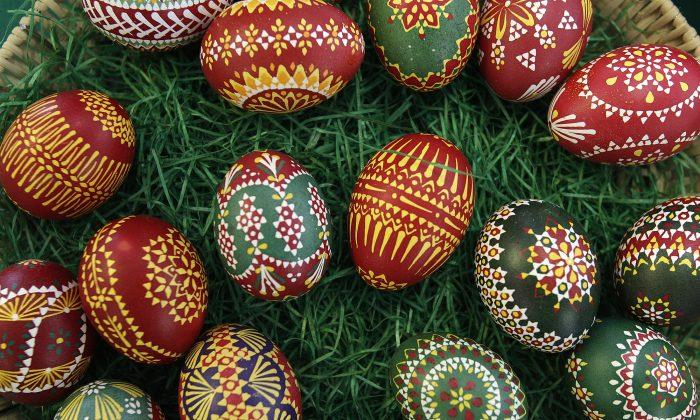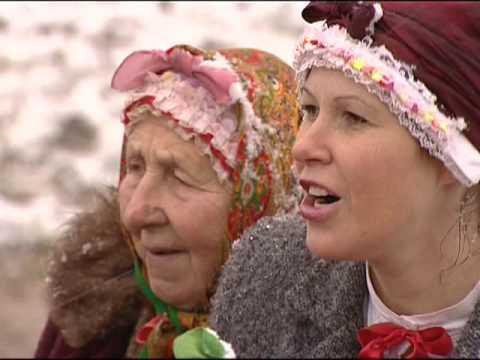The word “Easter” is Old English and comes from the word meaning “spring goddess.” Nowadays, in most of the Western world, the word still conjures up the coming of spring, with blooming flowers and painted eggs signifying rebirth and warmer weather.
Decorating eggs pricked with a needle at both ends, with the contents blown out and made ready for painting, was a custom in Canada 50 years ago. But now the art of decorating eggs is being replaced by paste-on decals and beautifully boxed chocolate-covered eggs with various sweet fillings.
In Europe, especially central Europe, several countries continue to decorate eggs. In fact, in Austria and the Czech Republic there are shops open year-round with Easter eggs as the featured item. In Prague, there is an annual Easter Egg Contest that attracts entrants from all over the country. This year, the Easter markets are being held from March 21 to April 11.
In Bohemia and Moravia in the Czech Republic this folk art has reached what can only be called a true art. I have visited museums in Moravia that showcase painted and straw-decorated Easter eggs. I have also been in Prague for the pre-Easter markets when women in regional folk costume sell their hand-decorated treasures on the streets in and around Old Town Square and Wenceslas Square.
According to notes in a folder given me by Manufaktura, a superb shop in Prague specializing in hand-made Czech traditional crafts, in the Bohemia and Moravia of olden times, “only filled (hard-boiled) eggs were decorated.” The eggs served as Easter presents, and giving someone an empty shell was inconceivable. The notes further state that “decoration of blown eggs spread in the days when decorated eggs started to be sold in larger measure in faraway regions.”
Traditional Easter customs include men and boys preparing little whips from braided twigs while the women and girls of the villages paint eggs. On Easter Monday, the men and boys went from house to house to give the Easter “dousing,” which consisted of a light whipping of all the women and girls, then throwing them in a cold bath. This was a tradition meant to chase away all illness and evil spirits.
The women and girls then gave each of the men and boys a beautifully painted egg. As they leave, each twig is decorated with a colourful ribbon by the women and the twigs become more colourful as the males progress from house to house, collecting eggs as they go.
There are 13 regions in the Czech Republic still producing beautifully decorated eggs. Vnorovske eggs are named after a Moravian village where typical production is done using a batik technique in a combination of red, yellow, and orange in both geometric and floral patterns. Tie-dyed eggs come from South Bohemia and are also made with a batik technique using a pin. A common pattern is a chainlet of stars drawn around the circumference. Colours vary.
Engraved eggs with tiny floral motifs are made in various regions, especially in Southern Moravia, as well as relief eggs decorated by the application of wax. Wired eggs, originally a Slovak tradition, are also made in Bohemia.
Drilled eggs, a more contemporary style, are inspired by Madeira embroidery and are produced throughout the country. There are even sauerkraut eggs, which are first dyed yellow, then orange, with wax making the designs. Several dippings in sauerkraut pickles create the final colour. When the wax is scraped off the design emerges.
My hope is to return to Prague`s four-star Hotel Clement to attend the Easter markets because the eggs I have in my collection are so old they are starting to crack.
For more information go to www.pragueexperience.com
Susan Hallett is an award-winning writer and editor who has written for The Beaver, The Globe & Mail, Wine Tidings, and Doctor’s Review among others. Email: [email protected]





